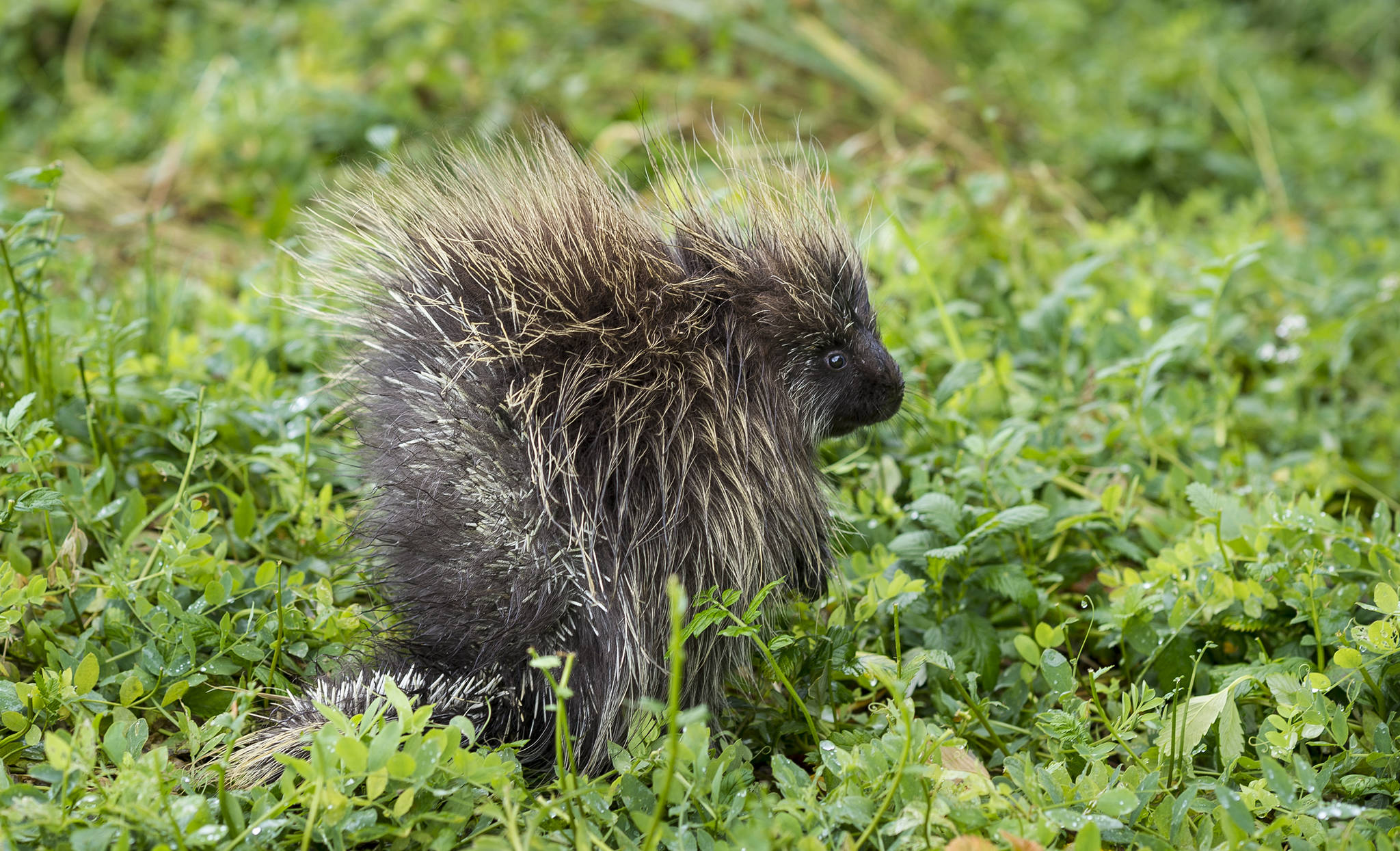On one of the few fine days in late September, a friend and I ventured up the Ben Stewart trail from Eaglecrest. We knew the trail would be wet and muddy, full of slippery roots, roots that reach out to snag your boots, not to mention several wind-thrown trees (and indeed it was!), but we wanted to get to the beautiful, broad valley below the last pitch up to the summit. We hadn’t been there for a couple of years, although it’s a favorite destination (or, for some, a check point on the way to the top).
So up we went, and the trail was as bad as we expected. So we didn’t hurry, drew on hidden stores of patience, and finally emerged into the sun in that valley. The flowers were done blooming, but their seed capsules were abundant—it had been a good year for them. It was too late in the season for us to be whistled at by marmots; they were sleeping down in their burrows. We found a comfortable rock to perch on and settled in to enjoy the views, along with tea and lunch.
A little cascade leaped stepwise from near the top, down a long slope across from our perch, and joined the meandering stream that braids its way along the flat valley floor. Sometimes we’ve seen a dipper or a thrush fossicking along that stream, but this time the only visible animal life was cranefly flitting high over the water.
Lunch demolished, tea sipped—time to pack up and go back down. More patience required, because a slip in the mud or on a wayward root could produce a nasty fall, more likely while descending than when headed up. Of course, this is more of a concern for those of us who aren’t spring chickens anymore than it is for sprightly young persons. So we watched our foot placement closely. However, we did notice that along the upper part of the trail the blueberry bushes were loaded with tasty berries; it was clearly a productive year. Human berry-pickers had not ventured up there and lots of berries awaited birds and bears.
That was a good day! And here are some assorted observations from other days:
— There’s a place out the road where a very productive stand of high-bush cranberries grows; it’s up on a little rise, protected from casual berry-pickers by a deep, wet channel. I’ve had my eye on that stand for years. This year I finally got my stubborn up, put on my waders, took my little bucket, and went to investigate. Once atop that little rise, I found that over half the berry crop dangled out of reach over a deep pool on the far side. But I filled most of my bucket with what was accessible. As I looked down near the bases of the shrubs, I saw four piles of berries minus all their seeds. Some spry creature had climbed out there before me and feasted well, probably a squirrel.
— I pulled in to the Eagle Beach State Park parking lot and hesitated a bit before climbing out into the perpetual drizzle. A raven sat in a nearby cottonwood tree, talking and calling. Then it started systematically nipping off the leaves from all the twigs it could reach. It moved to a new perch and did the same thing. And then again, letting loose a small storm of fluttering leaves. Why would it do that? Perhaps it was just playing, as ravens do. Or maybe it was “displacement activity” — the sort of behavior a critter does when it wants to do a certain thing but can’t, and takes out its frustration on an unrelated thing. (Humans do this a lot — put a fist through a wall instead of into someone’s face, or fuss over a loose thread instead of answering a painful question.)
— On the ends of old rotting logs on two different trails, I saw dozens of tiny, scarlet”pinheads” closely arrayed, making a bright patch on the dark logs. Each pinhead was only a few millimeters high. A lichen? Mmmm, probably a fungus. But I can’t find it in the books, and some local experts didn’t know, so its identity is a mystery.
— On Montana Creek road, a friend and I came upon a very young porcupine, sitting quite still beside the road. No mother was nearby; she may have decided it was time for the inevitable separation. This little guy didn’t put up its quill-y defenses at all. After a few minutes, it just moved over and put its head under a floppy skunk cabbage leaf. Out of sight, out of mind. We hoped it was OK!
• Mary F. Willson is a retired professor of ecology. “On the Trails” appears every Friday. Her essays can also be found online at onthetrailsjuneau.wordpress.com.

